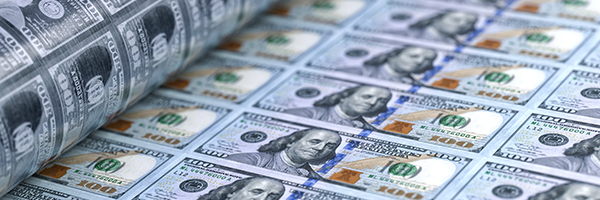
February 9, 2023 | Daily JAM, Morning Briefing |
As of the close in New York today, February 9, the Standard & Poor’s 500 was down 0.88% and the NASDAQ Composite was off 1.02%. That’s not a big absolute drop but it does mark quite a turnaround from earlier in the day. At 9:51 a.m. the S&P 500 was up 0.89% and the NASDAQ was higher by 1.21%. It’s a tribute to the strong bullish sentiment in this market (of which more later in this post) that stocks have held this ground. Certainly, macro “facts” continue to line up against an extension of this rally. Besides the continuing debate about where (and when) interest rates may peak, today we’ve got a continued inversion in the yield curve for Treasury bonds.

March 29, 2022 | Daily JAM, Morning Briefing |
Yesterday, March 28, a substantial piece of the Treasury yield curve fell into inversion. The yield on the 5-year Treasury climbed to 2.57%. Which put it above the yield of both the 10-year Treasury at 2.46% and the 30-year Treasury at 2.55%.

August 27, 2019 | Daily JAM, Morning Briefing, Short Term, Volatility, You Might Have Missed |
This morning you could hear the gears whirring as Wall Street strategists tried to position their portfolios so they were hedged against U.S-China trade war risk but also positioned to catch any bounce on good news on the trade front and ahead of the September 18...

June 6, 2019 | Daily JAM, Morning Briefing, Short Term |
Tomorrow, Friday, June 7, brings the May jobs report. Right now economists surveyed by Bloomberg are looking for the economy to add a robust 175,000 jobs with unemployment holding steady at 3.6% (as 49-year low) and average hourly wages growing at a very positive 3.2%...

March 22, 2019 | Daily JAM, Morning Briefing, Short Term |
It was always implicit in the Federal Reserve's decision on Wednesday that all interest increase in 2019 were off the table and that the central bank would end its $50 billion a month balance sheet run off in September. Yeah, lower interest rates are a boost to stock...

April 9, 2018 | Daily JAM, Long Term, Volatility |
Earlier this evening I wrote about the unusual inversion in the VIX Fear Index which had futures for the CBOE S&P 500 Volatility Index (VIX) priced to show more risk in the near future than in the far future. Normally the price curve runs in the other direction since the near future is usually more predictable than the far future. Near future and far future are relative terms in the financial markets. In this case we aren’t talking about the difference between short-term 3 month Treasury bills and 10-year Treasury notes. The VIX curve stretches out from future contracts that expire in a couple of weeks to contracts that run for 40 days or more. But a market indicator that does focus on a longer time horizon is also indicating trouble ahead for 2019 or more likely 2020.
May 22, 2016 | Daily JAM, Friday Trick or Trend, Mid Term |
To subscribe to JAM you need to fill in some details below including, ahem, some info on how you'll pay us. A subscription is $199 (although if you're subscribing with one of our special offers it will be lower) for a year for ongoing and continuing access to the...







